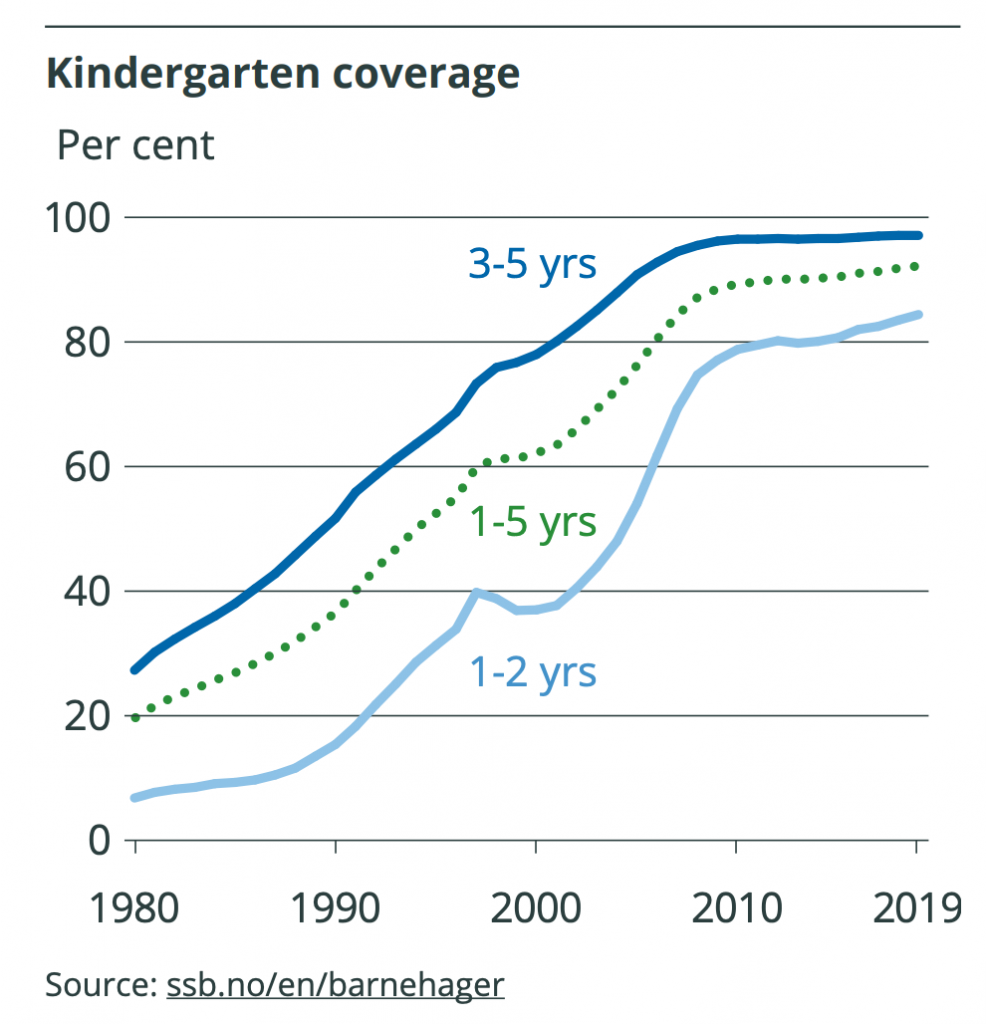After Joe Biden unveiled his American Family Plan, the discourse broke into the usual child care debate. Democrats propose subsidizing child care services. Republicans point out that this is not fair to the large percentage of disproportionately lower class parents who prefer to care for young children in the home. And then Democrats have various responses that range from observing that the working class parents who prefer child care services will benefit to claiming that home child care preferences reflect misogynistic cultures that should not be respected.
Before getting into the particulars of that debate, it is helpful to lay out some facts.
As a general matter, about half of kids below the age of 3 are cared for by a parent rather than some other child care arrangement. Once you get to age 3 and over, which is pre-kindergarten age, the number drops to 27 percent.
Parent care is also directly related to household income. The lowest income group is twice as likely to be providing parent care than the highest income group.
Part of the reason for this is that upper class people can more easily afford childcare. But it is also true that lower class people prefer parent care more than upper class people do.
In 2020, the Morning Consult conducted a poll that asked respondents “if all types of child care arrangements were equally priced and equally accessible to your family, what would have been your ideal child care arrangement for your youngest child?”
Forty-six percent of parents with less than a college degree said parent care was their ideal arrangement. The number was much lower for parents with bachelors degrees and post-graduate degrees.
Breaking the numbers down by income generates a similar skew.
Preferences also vary based on geography.
Within the usual way we talk about demographics in US politics, you could say that child care benefits reflect the preferences of highly-educated, rich, urbanites. Of course every demographic group actually has diverse opinions within it, but if we start saying that kind of nuance defeats these sweeping group-based claims, then the majority of political writing, especially liberal political writing, would disappear.
A more interesting way to make this same point is not to focus so much on how preferences and utilization vary across groups, but instead to just talk about specific arrangements that the Biden child care benefit system will pay for and specific arrangements that it will not pay for.
Under the Biden child care regime, a rich family that has a nanny will be eligible for thousands of dollars of subsidies each year, either through the CDCTC or the DCFSA, while a working class family where one of the parents takes care of their 1-year old at home would receive nothing.
Republican critics are correct and wise to bring up this problem, but none of them actually propose a serious solution to it. When JD Vance clumsily tried to make this point yesterday, he ended up saying that we should do the Josh Hawley child care plan instead. But the Josh Hawley plan provides no benefits to families with less than $7,540 of earnings and provides married-parent families twice as much benefits ($12,000) as single-parent families ($6,000). This kind of program would be even more skewed towards the rich than what Biden is proposing and is also nonsensical and immoral: child care costs the same regardless of the number of parents you have and poor families need benefits too.
The Democratic response to these critics is also very underwhelming. Pointing out that many people would benefit, including many working class people, simply is non-responsive to the point about their proposals opening up a huge asymmetry between people who want to do parent care and people who want to do center-based care. The idea that parent-care preferences are wholly illegitimate and based in oppression is also pretty ridiculous. You could think the percentage of people with those preferences is somewhat higher due to reactionary views about gender roles in society, but it’s hard to imagine that in a fully pure culture the percentage with those preferences would be 0.
One of the typically unstated ideas underlying the Democratic approach to child care benefits is that women’s labor force participation is important and should be higher. Thus, the asymmetry between parent care and non-parent care is actually good because it will nudge more women out into the labor force than a system where you did not create that kind of asymmetry. Put more menacingly: making people who do parent care suffer financially is worth the marginal women who enter the labor force to avoid that suffering.
That is an interesting ideological debate to have, but it may not actually be a debate with any real stakes. Whether providing benefits for parental child care actually has a huge effect on women’s labor force participation is something that can be analyzed empirically. And the answer appears to be that it doesn’t.
Norway is instructive in this regard. In 1998, Norway introduced a home child care allowance for parents with children below the age of 3. This gave parents a choice between using heavily subsidized child care services or receiving a check to compensate them for doing parent child care.
As we can see in the graph below, this had an effect relative to the counterfactual scenario. But ultimately this effect was pretty small and the other cultural dynamics in the society clearly overwhelmed it. When the home child care allowance was introduced, 40 percent of 1-year-olds and 2-year-olds were in a child care center. About 12 years later, that number had doubled to 80 percent.

Rather than fighting the cultural mommy wars over whether stay-at-home parents are good or bad, the Democrats should instead simply craft a child care regime that supports parent care and center-based care. The most obvious way to do this is to provide free (or heavily subsidized) child care services for all who want them and to provide a home child care allowance for those who prefer to care for their young children (below the age of 3) in the home. This is what I proposed in my Family Fun Pack and this is how it is done in Finland and Norway.

